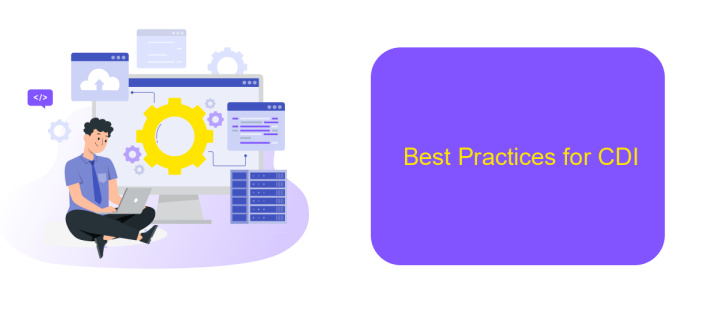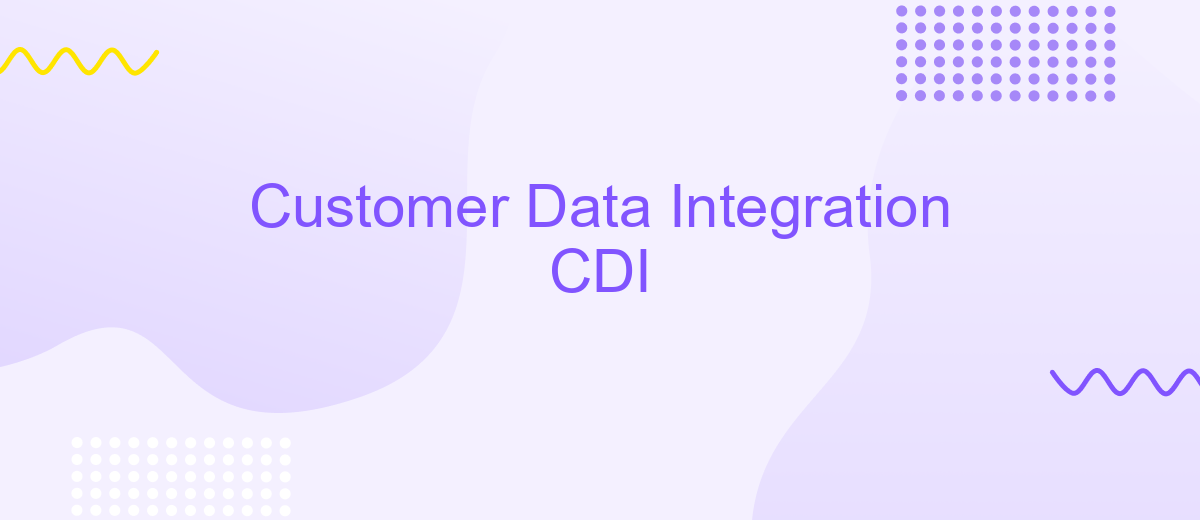Customer Data Integration CDI
Customer Data Integration (CDI) is a crucial process that ensures a unified and accurate view of customer information across multiple systems and touchpoints. By consolidating disparate data sources, CDI enhances customer insights, improves decision-making, and fosters personalized experiences. This article explores the significance of CDI, its key components, and the benefits it brings to businesses striving for data-driven success.
Introduction
Customer Data Integration (CDI) is an essential process for businesses seeking to unify and manage customer information from various sources. By integrating customer data, companies can gain a comprehensive view of their customers, enabling personalized experiences and more effective marketing strategies. CDI helps in breaking down data silos, ensuring that all customer interactions and transactions are captured and utilized efficiently.
- Enhanced customer insights
- Improved data accuracy
- Streamlined marketing efforts
- Better customer service
To achieve seamless data integration, businesses can leverage tools like ApiX-Drive, which simplifies the process of connecting different data sources. ApiX-Drive offers an intuitive platform that automates data transfer and synchronization, reducing manual effort and minimizing errors. By utilizing such services, organizations can ensure that their customer data is always up-to-date and accessible, leading to more informed decision-making and improved customer satisfaction.
Benefits of CDI

Customer Data Integration (CDI) provides a unified view of customer information by consolidating data from various sources. This integration enhances decision-making processes, allowing businesses to offer personalized experiences and targeted marketing strategies. By having a comprehensive understanding of customer preferences and behaviors, companies can improve customer satisfaction and loyalty, ultimately driving revenue growth.
Implementing CDI solutions, such as ApiX-Drive, simplifies the integration process by connecting different data sources seamlessly. ApiX-Drive automates data synchronization, reducing manual efforts and minimizing errors. This efficiency enables businesses to stay agile and responsive to market changes. Moreover, real-time data integration ensures that all departments have access to the most up-to-date information, fostering better collaboration and more effective strategies across the organization.
Challenges of CDI

Customer Data Integration (CDI) presents several challenges that organizations must address to ensure seamless data management and utilization. These challenges can significantly impact the efficiency and effectiveness of data integration processes.
- Data Quality: Ensuring the accuracy, consistency, and completeness of data from various sources is a major hurdle.
- Data Privacy and Security: Protecting sensitive customer information during integration is critical to comply with regulations and maintain trust.
- System Compatibility: Integrating data from disparate systems and platforms often requires overcoming compatibility issues.
- Scalability: Managing increasing volumes of data as the business grows can strain existing integration solutions.
- Cost: Implementing and maintaining CDI solutions can be expensive, requiring significant investment in technology and expertise.
Services like ApiX-Drive can help mitigate some of these challenges by providing a user-friendly platform for seamless integration of various data sources. By automating data flows and ensuring compatibility, ApiX-Drive enhances data quality and security, making it easier for organizations to manage and utilize their customer data effectively.
Best Practices for CDI

Customer Data Integration (CDI) is essential for businesses aiming to create a unified view of their customers. Effective CDI practices ensure that data from various sources is accurately merged and easily accessible, enhancing decision-making and customer experience.
To achieve optimal CDI, it is crucial to follow best practices that streamline the integration process and maintain data quality. This involves using reliable tools and methodologies tailored to your business needs.
- Standardize data formats across all sources.
- Ensure data accuracy through regular validation and cleansing.
- Implement robust security measures to protect customer data.
- Utilize integration platforms like ApiX-Drive to automate data synchronization.
- Continuously monitor and update integration processes.
By adhering to these best practices, businesses can effectively manage and integrate customer data, leading to improved insights and operational efficiency. Leveraging tools like ApiX-Drive can further simplify the integration process, allowing seamless data flow between various systems.
- Automate the work of an online store or landing
- Empower through integration
- Don't spend money on programmers and integrators
- Save time by automating routine tasks
Conclusion
In conclusion, Customer Data Integration (CDI) is a critical component for businesses aiming to enhance customer experience, streamline operations, and gain valuable insights. By consolidating data from various sources into a single, unified view, organizations can make more informed decisions, improve customer engagement, and ultimately drive growth. The integration process, while complex, can be simplified with the right tools and strategies, ensuring data accuracy and consistency across all platforms.
For businesses seeking an efficient way to manage their data integration, services like ApiX-Drive offer a robust solution. ApiX-Drive facilitates seamless integration between multiple applications, automating data transfer and reducing the risk of errors. By leveraging such services, companies can focus on their core operations while ensuring that their customer data is accurately integrated and up-to-date. Embracing CDI and utilizing advanced integration tools are essential steps for any business looking to stay competitive in today's data-driven marketplace.
FAQ
What is Customer Data Integration (CDI)?
Why is CDI important for businesses?
What are the common challenges in Customer Data Integration?
How can businesses automate the Customer Data Integration process?
What are the best practices for successful Customer Data Integration?
Time is the most valuable resource for business today. Almost half of it is wasted on routine tasks. Your employees are constantly forced to perform monotonous tasks that are difficult to classify as important and specialized. You can leave everything as it is by hiring additional employees, or you can automate most of the business processes using the ApiX-Drive online connector to get rid of unnecessary time and money expenses once and for all. The choice is yours!


